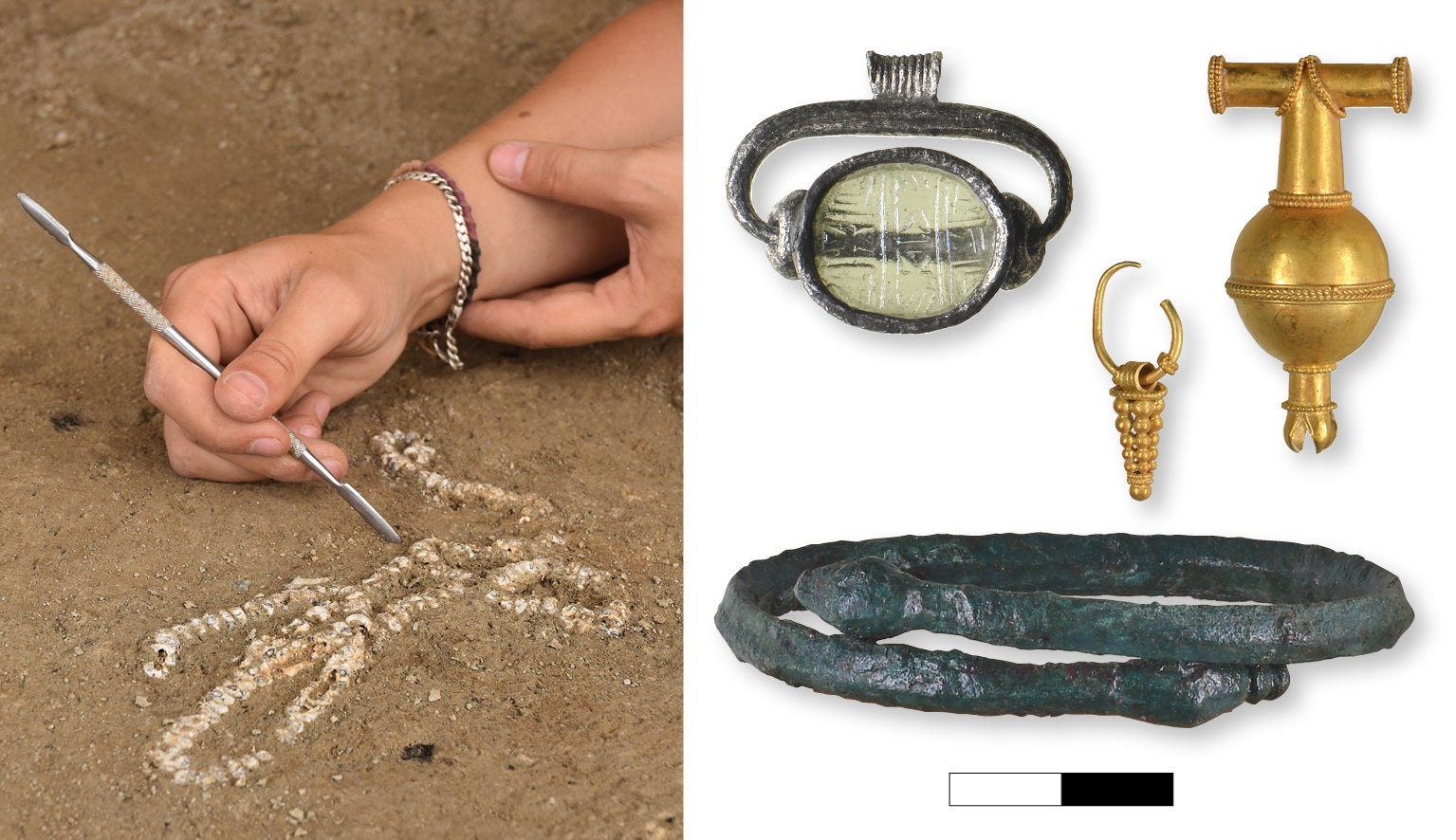Archaeologists discover ancient Greek temple filled with hidden treasures
The 2000-year-old temple was discovered full of gold, silver and amber
Your support helps us to tell the story
From reproductive rights to climate change to Big Tech, The Independent is on the ground when the story is developing. Whether it's investigating the financials of Elon Musk's pro-Trump PAC or producing our latest documentary, 'The A Word', which shines a light on the American women fighting for reproductive rights, we know how important it is to parse out the facts from the messaging.
At such a critical moment in US history, we need reporters on the ground. Your donation allows us to keep sending journalists to speak to both sides of the story.
The Independent is trusted by Americans across the entire political spectrum. And unlike many other quality news outlets, we choose not to lock Americans out of our reporting and analysis with paywalls. We believe quality journalism should be available to everyone, paid for by those who can afford it.
Your support makes all the difference.A 2000-year-old temple filled with gold and jewels has been unearthed in Greece by archaeologists.
The site, excavated on the Greek island of Evia, was discovered packed full of gold, silver and amber.
Dating back to 7th century BC, the 100-foot building was uncovered in 2023 by a team of 50 researchers.

“The excavation of the archaic temple brought to light rich offerings: Corinthian alabaster, attic vases, ritual prochos of local production, as well as jewelry made of precious materials like gold, silver and coral,” Greece’s ministry of culture said.
A number of structures were also discovered inside the temple which were likely used as altars by worshippers.
A horseshoe-shaped altar was the most unique of the designs, and thick layers of ash—which was rich in charred bones—showed steady use.
“The possibility that some of them predate the temple cannot be ruled out,” the ministry added. “The first level of use of the horseshoe altar yielded pottery dating to the end of the 8th century BC.”
In what the researchers believe are some of the oldest sections, they discovered Geometric period bronze figurines representing bulls and a ram.

The site overall stretches even deeper into history than the temple itself, with test cuts showing remains of buildings from as far back as the 9th century BC.
“Although the investigation of the earliest of these levels has only just begun, the first discoveries suggest that the cult had its roots in the centuries after the end of the Mycenaean period,” the statement said.
In 2015, a 3500-year-old warrior grave was found with in southern Greece with solid gold rings, intricately-built swords, fine-toothed ivory combs and more than a thousand precious stone beads.
The ministry called the treasure “the most important to have been discovered in continental Greece in 65 years.”
Join our commenting forum
Join thought-provoking conversations, follow other Independent readers and see their replies
Comments